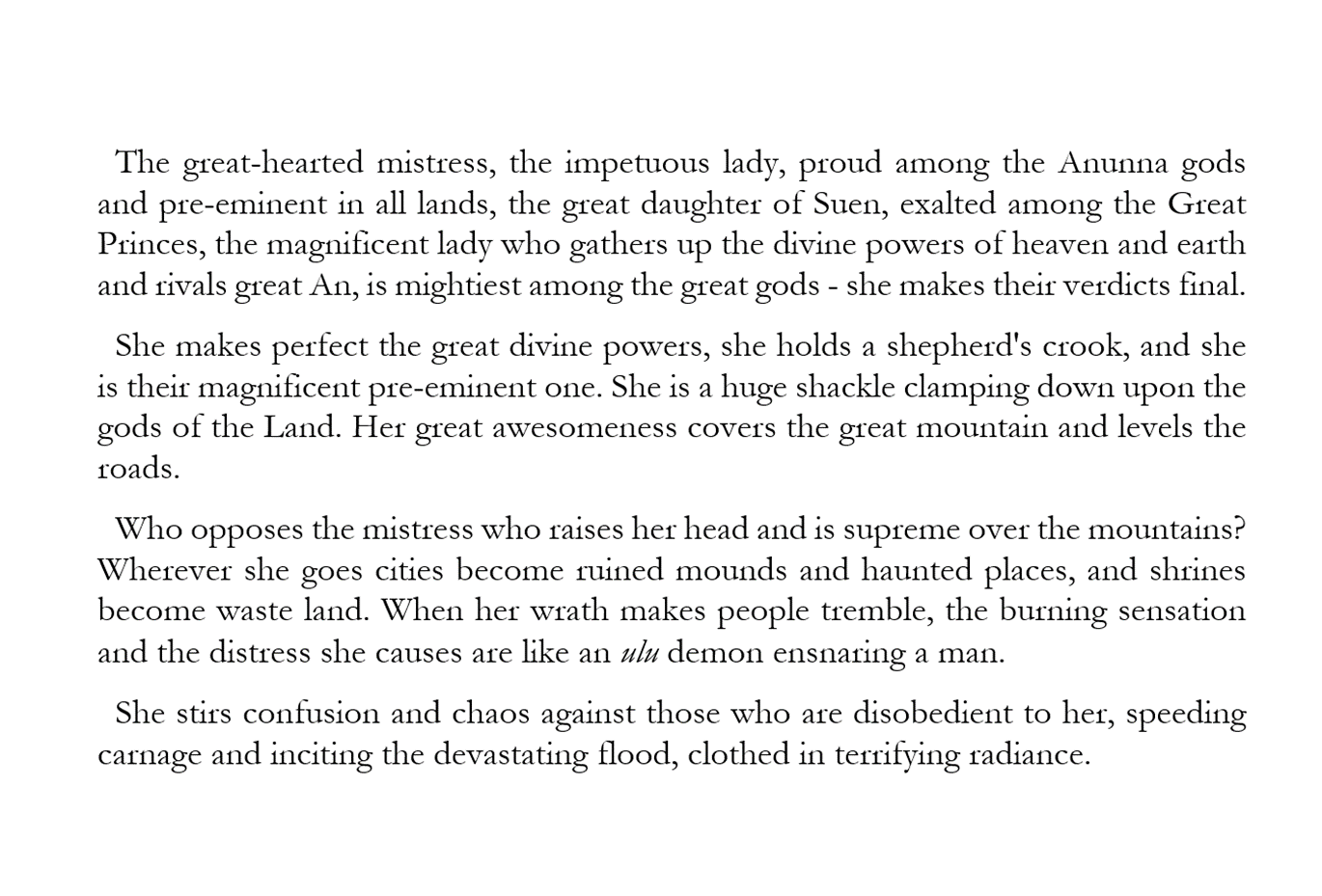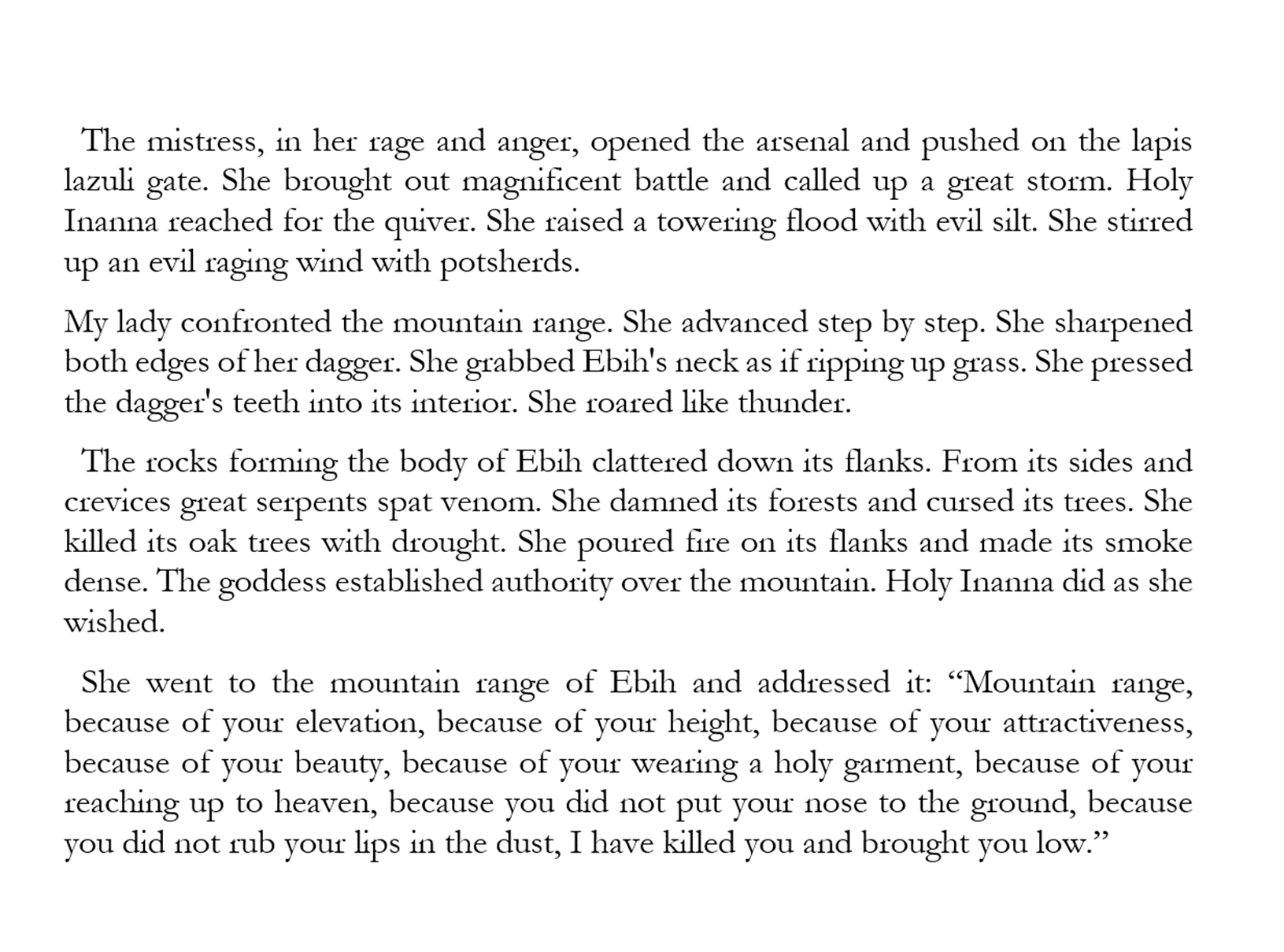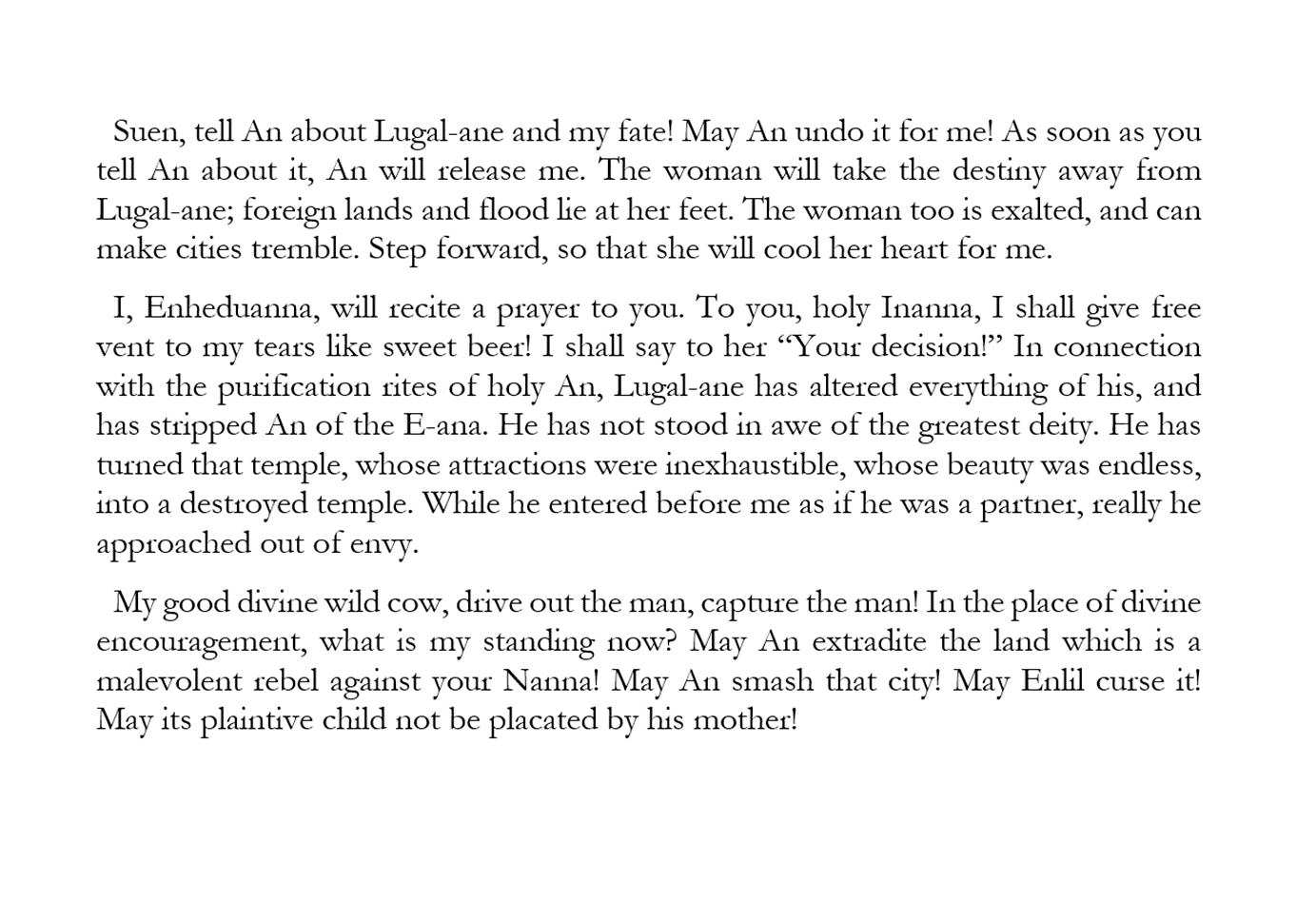The woman shown on this 4,300 year old alabaster disk was called Enheduanna.
She is the first known writer in all of human history.
And her work is still shaping literature in the 21st century...

The woman shown on this 4,300 year old alabaster disk was called Enheduanna.
She is the first known writer in all of human history.
And her work is still shaping literature in the 21st century...

In around 2,300 BC the king of Akkad, a city in Mesopotamia, led a rapid and wildly successful conquest of the surrounding cities and regions.
His name was Sargon, and his kingdom has been tentatively called the world's first empire.

In southern Mesopotamia he had conquered the cities of Sumer, the world's oldest civilisation.
And Sargon installed his daughter Enheduanna as High Priestess at the Temple of Nanna - the moon god - in the city of Ur, one of the greatest and most important Sumerian cities.

Her role wasn't just symbolic.
Sargon depended on Enheduanna not only to maintain authority in Ur but to synthesise the differing religious traditions of Sumer and Akkad, thus ensuring his military conquest could become a cultural one, too.
The ruins of Ur, which flourished for centuries, were largely excavated in the 1920s by Sir Leonard Woolley.
That's when the Disk was discovered, along with Enheduanna's works and a wealth of other ancient artefacts, writings, and remains.

The liturgical poetry composed by Enheduanna when she was High Priestess at the Temple of Nanna was created almost a thousand years before Genesis and fifteen hundred years before Homer's Iliad and Odyssey were first written down.
She is the first ever writer whose name we know.

Much of it is dedicated to Inanna, known to the Akkadians, Assyrians, and Babylonians as Ishtar.
She was the goddess of love, fertility, and war. And in the Hymn to Inanna we can see how Enheduanna characterises her. Rather fearsomely, it would seem:

But what is most striking about Enheduanna's religious writing is how personal it can be.
She figures as a character in her own work, directly addressing Inanna and bringing her own experiences into this devotional verse:

Much of Enheduanna's work represents an attempt to systematise Mesopotamian theology.
This makes sense, given her thinly veiled political role. The Temple Hymns list the shrines around her father's empire and their respective gods, uniting the Akkadian and Sumerian pantheons.

One by one she goes through the great temples of both northern and southern Mesopotamia, describing them and their gods in detail.
But to view it in purely political terms does not do justice to what must have been a vast and complex theological and literary task.
The originality of what Enheduanna did is perhaps revealed in the final line of the Temple Hymns:
"The compiler of the tablet is Enheduanna. My lord, that which has been created here no one has created before."
Nobody, it seems, had ever attempted anything quite like it.
War also features prominently, particularly in what has been called Inanna and Ebih, a sort of epic religious poem composed by Enheduanna.
It shows her vivid descriptive talents, too:

It tells the story of how Inanna was offended by the mountain range Ebih and destroyed it.
And, in this way, we can see Enheduanna at work in the codification of religious mythology, making that crucial leap from an oral to a written tradition.

At some point a rebel king called Lugal-ane revolted against Sargon and demanded recognition from Enheduanna, given her status as the highest religious authority in Ur.
She refused and he banished her. During this exile Enheduanna wrote the enraged Exaltation to Inanna:

And, in the process of invoking Inanna to strike back against the heretical Lugal-ane, Enheduanna reveals much about her own experience of the rebellion.
Despite the gulf in time separating us from Enheduanna, her voice speaks clearly across the millennia.

What was life like in Enheduanna's time? We can never know for sure, but a mixture of artefacts and writings might give us some idea.
In the Disk she is depicted wearing a head-dress, one perhaps not unlike that of Queen Puabi, also excavated in Ur and dated to around 2,500 BC.

Queen Puabi's head-dress was excavated from the Royal Cemetary at Ur, along with these lyres and board games.
Even two centuries before Enheduanna's life Sumer was a complex urban society with time enough for music and entertainment.


The tiered building depicted on the left of the Disk of Enheduanna most likely represents a ziggurat, one of Mesopotamia's great temple-pyramids.
A huge ziggurat was built in Ur after Enheduanna's lifetime, partially restored in the 1970s to its original appearance.


Enheduanna's work survived for centuries in the civilised world of Ancient Mesopotamia.
All of the surviving examples of her poetry come not from Enheduanna's lifetime in the 23rd century B.C., but from copies made about five hundred years later in the Old Babylonian Period.

Her hymns and poetry became canonical, used not only in religious worship after her death but also as part of the training for the religious and royal scribes of Mesopotamia.
They studied, learned from, and imitated her work - a formal literary tradition was emerging.
The religious mythology of the Sumerians, Akkadians, and Assyrians had a significant influence on the Old Testament.
Indeed, the story of Noah's Ark and the flood is an almost direct import from the much older flood myths of Mesopotamia.
And Abraham himself came from Ur.

The Ancient Greeks recognised the huge cultural debt they owed to Egypt, the Eastern Mediterranean, and Mesopotamia.
It was from the Phoenicians that they learned writing, and Phoenician culture was heavily influenced by that of the Assyrians.

To give one clear example, the Greek goddess of love - Aphrodite - was a direct descendant of the Phoenician goddess Astarte, herself a version of the Assyrian-Akkadian Ishtar and, originally, of the Sumerian Inanna.
Who, as we know, was Enheduanna's favourite deity.

It is probable, then, that the literary tradition established by Enheduanna influenced both the Old Testament and Homeric poetry.
And, given their immense influence, the long chain that links the 21st century to Enheduanna remains, even at a great distance, intact.